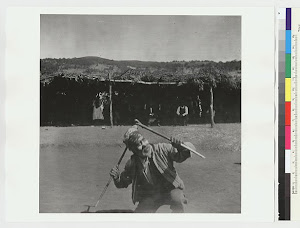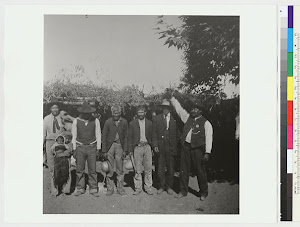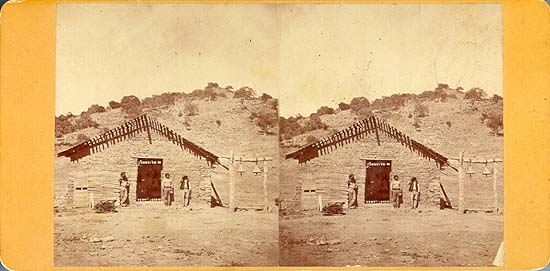Howka tribal members, I am hoping somebody from our tribe or our rez will see this and use it for our language.
Native languages find a pal in software
By LAUREN McSHERRY, Special to The Press-Enterprise
For years, Ernest Siva, a Morongo tribal member who runs a Southern California Native American educational and cultural center with his wife in Banning, has been working to preserve the Serrano language.
Siva and his sister, Arlene Craft, are the only fluent Serrano speakers left in the area.
Now, Siva has one more tool to help him do so.
On a recent day at the Dorothy Ramon Learning Center, Siva was introduced to a new software program called Language Pal that is used to digitally record words and phrases in Serrano.
Phrases, songs, prayers and multiple dialects can be recorded.
The software organizes the recordings and applies them to multiple choice questions, electronic flashcards and speech lessons. Once the language has been recorded, it can be exported to an iPod Touch or iPhone.
The software was developed by a husband-and-wife team, Don and Kara Thornton.
Their Banning based company, Thornton Media Inc., is devoted to harnessing new technologies to keep indigenous languages from vanishing. They use video games, iPods and iPhones in an effort to motivate younger generations to become language learners.
“It’s not just documentation,” Don Thornton said of the language software. “It’s revitalization. It’s teach the language, teach the songs, teach the stories.”
The fight to save threatened languages seems daunting.
There are 175 native languages remaining in the United States, but 90 percent of them will disappear in the next 20 years, Don Thornton said.
Siva hopes the software will appeal to younger generations of the Morongo tribe, making it easier and more fun for them to study Serrano.
“It’s good to start with a new technology,” said Siva, 72. “We’d like to be able to interact with the youth of today.”
“They’d probably be attracted to this more than a traditional language class,” his wife, June, added.
The plight of disappearing languages dates back to the late 1800s when the U.S. government opened off-reservation boarding schools that were part of a concerted effort to force native people to only speak English and to wipe out indigenous languages and culture, said Clifford Trafzer, professor of Native American history at UCR.
Tribes’ priority
In recent decades, many tribes have made it a priority to keep their languages alive, he said.
The Thorntons have devoted their lives to providing services for documenting endangered American Indian languages across the United States.
They have worked with more than 110 tribes and Canadian First Nations since 1995 when Thornton Media rolled out its first language program.
Over the years, the couple has worked with a number of tribes in the area to help them preserve their languages, including the Soboba, Twenty-Nine Palms and Pechanga.
The Thorntons have an RV that is set up as a mobile recording studio which they use to criss-cross the country, stopping at tribal nations that are working to revitalize their languages. The Thorntons sit with tribal elders and record them speaking their language, then show them how to use the software.
In the coming year, they plan to drive to North Carolina and the Northwest territories as well as work with Aborigines from Australia to record oral histories.
Each tribe retains the rights to the language software that its members create. It is up to individual tribes to decide how to distribute the software and whether to release the language software with their indigenous language to the public as an iPhone app or Nintendo DSI application, Don Thornton said.
Because Don Thornton is part Cherokee and collaborated with his family and friends, the company was recently able to launch two tools to teach the Cherokee language — a free iPhone app and a one-level demo video game called Rez World.
A former filmmaker, Don became interested in documenting the Cherokee language when he learned that his grandmother had never been credited for her work creating a Cherokee language dictionary.
As one of the few fluent speakers in her tribe in Tahlequah, Okla., his grandmother had also grown weary of the cumbersome repetition required to teach Cherokee.
On average, a student needs to hear a sound 85 times before being able to say it correctly, Don said.
“It must be tremendously frustrating for them to do that year after year,” he said of elder tribal members.
Don thought a computer program that could give voice to consonants, vowels and words upon a student’s command would be a more efficient way to teach Cherokee.
The Thorntons have been working the video game Rez World longer than Language Pal, but it is expensive to develop a video game.
educational tool
The game takes language learning to another level, immersing the player in a virtual world where everyone speaks Cherokee and the only way to score points is by engaging in conversation with the characters to get clues to winning each level.
“It is used solely for educational purposes only,” Kara Thornton said.
“But it’s still fun. It changes the whole mind-set of language acquisition.”
Rez World uses software developed by Alelo, a company that created similar video games for the military to teach conversational Arabic and other languages to service members being deployed overseas.
“The whole idea is you’re trying to teach language the way it’s used,” said Andre Valente, Alelo CEO.
© 2009 Press-Enterprise Company
Wednesday, September 16, 2009
New ways to save tribal languages
Posted by
Karen Vigneault Librarian
at
8:31 AM
![]()
Subscribe to:
Post Comments (Atom)













No comments:
Post a Comment